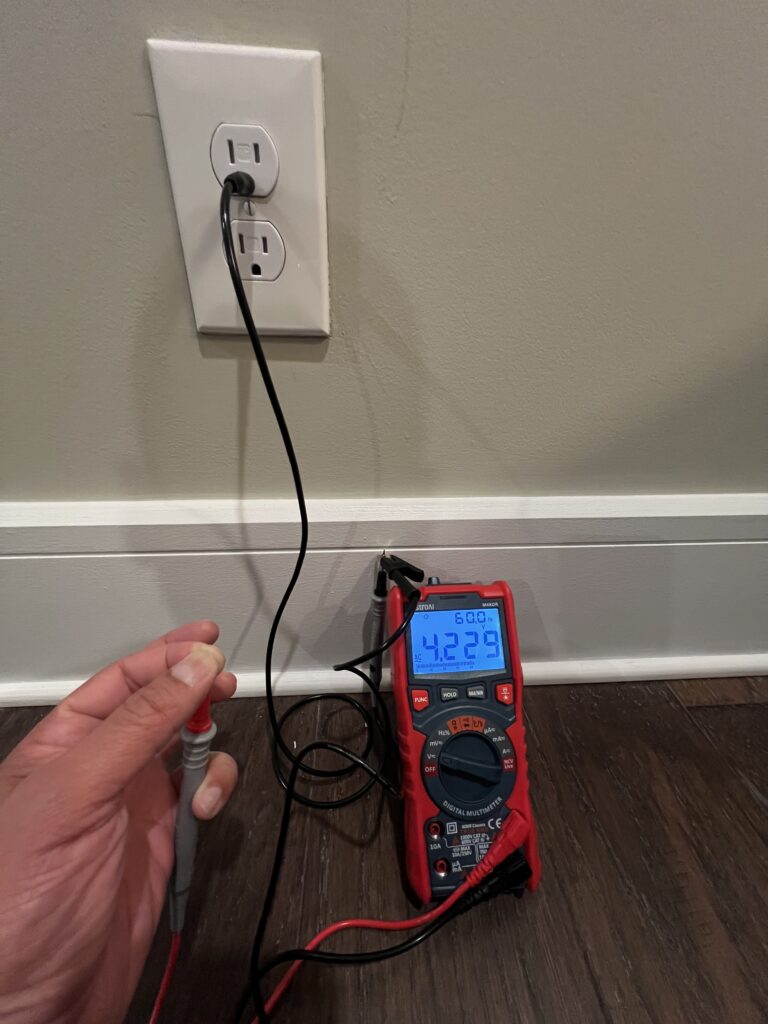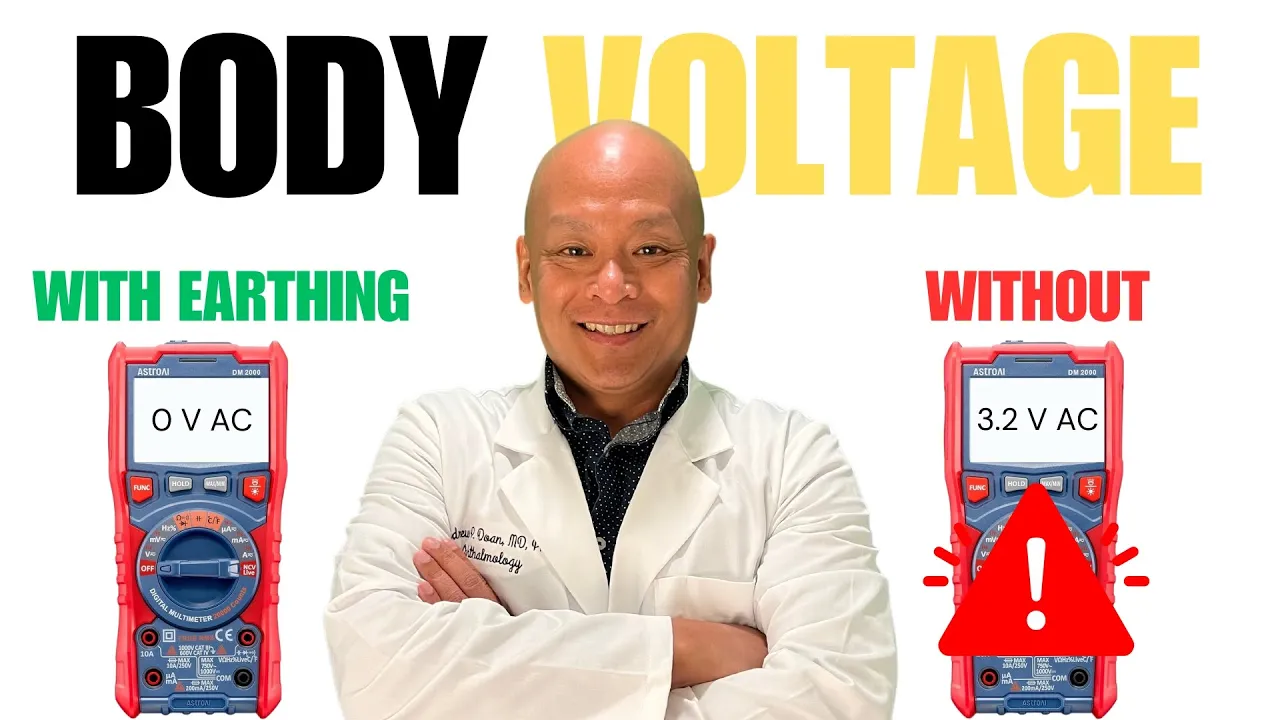I’ve received countless questions about how to measure body voltage using a multimeter. Today, I’m diving deep into this topic to walk you through the entire process. Whether you’re new to this or have some experience, I hope this guide simplifies the process for you.
First, let me set the stage. Measuring body voltage may sound technical, but it’s straightforward once you have the right tools and understand the process. I’ll be using the AstroAI M6KOR multimeter. This meter is excellent and widely accessible in the U.S. and internationally.
To begin, let’s look at the specs of the multimeter and the basic tools you’ll need. The AstroAI M6KOR is versatile, measuring various parameters such as alternating current (AC) voltage, direct current (DC) voltage, resistance, and more. For our purposes, we’ll focus on the AC voltage setting because we’re measuring body voltage induced by electromagnetic fields (EMF). These fields come from everyday appliances, wiring, and devices in your environment.

- The first step is to set up your multimeter. I turn the dial to the AC voltage setting, identified by the squiggly line (∼). The device lights up, indicating where to connect the positive and negative leads. Using an outlet checker, I verify that the outlet is properly grounded. This is crucial for accurate measurements and safety.
- Next, I connect the negative lead of the multimeter to the outlet ground using banana plugs and cable.
- It’s essential to ensure that the multimeter is set to AC voltage. I toggle the “function” button until the screen displays the appropriate setting. You’ll notice the frequency, measured in hertz (Hz), also appears on the display. This indicates the cycles per second of the alternating current.
- With the multimeter ready and wearing shoes to insulate my body from the ground, I pick up the red (positive) lead and gently pinch it between my fingers. My body AC voltage is 4.229 V with a frequency of 60 Hz, confirming that electrical EMFs in my surroundings are inducing electrical currents in my body.
- To check body AC voltage drop with grounding sheets/mats/products, do not use the outlet for the grounding product if the meter is outlet grounded. The house ground is shared by the outlets so a short circuit is created. The voltage differential between the outlets, grounding product, and body is near zero when all are in the same short circuit (i.e., you’re not grounded, but you’ll see a body AC voltage drop).
- Proper body voltage measurement should be made with the voltmeter grounded to the outlet ground and the grounding product to a grounding rod outside. I prefer to use two grounding rods, one for the meter and one for the grounding product, when I make body voltage measurements.
Why is this happening? The answer lies in the electromagnetic fields created by the devices around me. LED lights, electrical wiring, and appliances generate EMF, which induces a small current through the human body via a process known as capacitive coupling. These fields are invisible, but their effects can be measured using tools like this multimeter. The multimeter shows a body voltage of 4.229 V AC. This value is typical for an environment with moderate EMF exposure.
Now let’s explore the impact of grounding products, such as earthing mats, mattress covers, or shoes. I attach an earthing patch to my skin, connected via a cord to the grounding port of my extension cord. This creates a direct path to the earth and blocks the EMF induction of body voltage. After connecting the patch, I pinch the positive lead again. The multimeter shows a significant drop in body voltage—from 4.229 V AC to below 300 mV AC. This 93% reduction is substantial and demonstrates the effectiveness of grounding in mitigating EMF exposure. While a complete drop to zero isn’t necessary for health benefits, achieving a significant reduction is highly beneficial, and I aim for a 90-95% reduction in body AC voltage with grounding products.
To further illustrate, I step outside to measure my body voltage in a natural environment. Outdoors, I use a barbecue skewer as a makeshift grounding rod. By inserting the skewer into the soil and attaching the multimeter’s negative lead to it with an alligator clip, I can measure my body voltage against the earth’s natural baseline. While wearing insulating footwear, my body voltage is approximately 17 mV AC, a relatively low reading compared to indoors, because I am away from the electrical wiring in my home. When I remove my shoes and go barefoot on concrete, the voltage drops further to 5 mV AC. On grass, it drops to zero. Concrete is conductive but less so than grass.
This experiment highlights an important concept: AC voltage is not natural to the human body. It’s a byproduct of modern electrical systems and EMF exposure. Grounding, whether through direct contact with the earth or using grounding products, helps neutralize these electrical currents induced by EMFs. Studies suggest that grounding can have various health benefits, such as reducing inflammation, improving sleep, and lowering stress levels. While the scientific community continues to explore these claims, many people, including myself, find grounding to be a simple and effective wellness practice.
Returning to the multimeter, I want to address some common questions. Many people ask whether they need a specific type of multimeter for measuring body voltage. The answer is no; multimeters with an AC millivoltage setting will work. However, ensure that the device can measure low voltages with high sensitivity, at least 600 mV AC. Another frequent question is about readings in different environments. Factors such as proximity to electrical devices, grounding quality, and environmental EMF levels can all influence measurements.
In conclusion, measuring body voltage with a multimeter is a straightforward process that provides valuable insights into your exposure to EMF. By following the steps outlined in this guide, you can easily measure your own body voltage and explore the benefits of grounding. Don’t forget to subscribe for more practical tips and insights. Thank you for joining me today, and I look forward to sharing more with you in the future!
I have used Earthing Products for more than 5 years and recommend the Earthing mattress cover under a 100% cotton sheet: https://tinyurl.com/5fa5b9ut


Leave a Reply